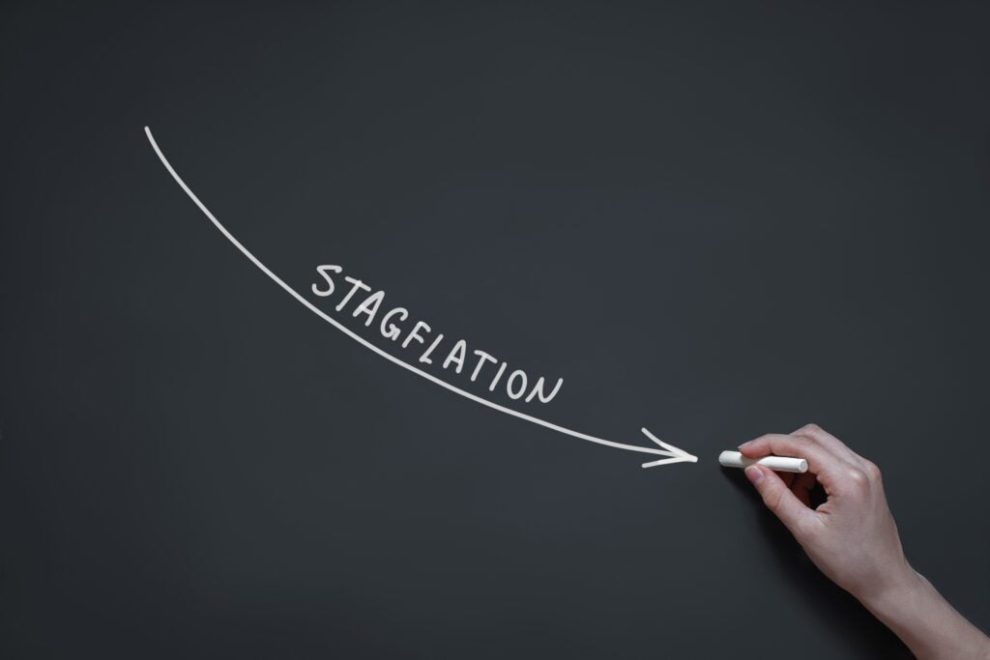A growing chorus of economists is sounding the alarm that stagflation — a toxic mix of sluggish growth, rising unemployment, and persistent inflation — is no longer a distant threat but the most probable path for the U.S. economy.
Reacting to the May Federal Open Market Committee meeting and Chair Jerome Powell’s remarks, economists viewed the Fed’s acknowledgment that “risks of higher unemployment and higher inflation have risen” as a clear admission that the economy has entered a stagflationary phase.
This unwelcome scenario that hasn’t dominated forecasts since the 1970s now sharply complicates the central bank’s policy path moving forward.
“The Federal Reserve left interest rates unchanged and signaled the higher probability of a stagflationary wind,” said Mohamed El-Erian, chief economic adviser at Allianz.
Justin Wolfers, a professor at the University of Michigan, summed up the concern in starker terms: “Never a good moment when your central bank says that it’s worried about both higher unemployment and higher inflation. That’s a problem that monetary policy alone can’t solve.”
Markets Rethink Rate Cut Timeline
Financial markets swiftly adjusted expectations for monetary easing. The probability of a 25-basis-point rate cut in June fell to 23%, down from 28% prior to Powell’s remarks, according to CME FedWatch data.
July still carries a 72% chance for a cut, but the window for rate reliefs appears to be narrowing.
Oxford Economics chief U.S. economist Ryan Sweet said the Fed’s response to the current situation will be reactive, not preemptive.
“The Fed is unlikely to cut interest rates earlier than our forecast of December, unless there are definitive signs that the labor market is deteriorating,” he said.
The initial impact of tariffs might be disinflationary, Sweet added. That’s due to weaker travel prices and falling energy costs. But higher prices will likely emerge later this year, especially as global supply chains absorb new trade restrictions, he warns.
During his press conference, Powell offered a blunt reminder: this is not 2019.
Back then, the Fed delivered three rate cuts in response to a slowing economy and tame inflation at 1.6%. But with core inflation now running above 2% for four straight years, the Fed’s flexibility is constrained.
Charlie Ripley, senior investment strategist at Allianz Investment Management, said the Fed is staying data-driven while others push for immediate action.
“Despite volatile markets, the current state of the U.S. economy shows expanded activity at a solid pace,” he said. “Patience is a virtue, and the Fed seemingly has an abundance of it relative to other market participants.”
Macro analyst Otavio Costa from Crescat Capital reminded that a year ago, Powell said that he doesn’t see “the stag, nor the flation.”
“Today, the Fed’s projections anticipate both. This is a timely reminder that we’re still grappling with a rare trifecta: inflation like the 1970s, debt like the 1940s, and equity valuations like the late 1920s,” he said in a post on social media X.
Could The Fed Be Too Late?
Chris Zaccarelli, chief investment officer at Northlight Asset Management, sees the Federal Reserve caught between the opposing forces of rising inflation and a weakening economy.
He said the Fed may be forced to delay rate cuts until unemployment climbs sharply, which could risk acting too late.
“The markets are going to increasingly worry about a recession and unless some trade deals are made before the tariff pause runs out, we are going to see markets drop again like they did in early April,” he said.
Read now:
Image: Shutterstock








Add Comment